Showing Spotlights 121 - 128 of 201 in category All (newest first):
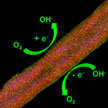 Researchers have demonstrated a unique coaxial carbon nanocable material with pristine carbon nanotubes as the core and nitrogen-doped wrinkled carbon layer as the shell. The active sites rendered by the surface enriched dopant atoms on the carbon nanocables are accessible and effective to catalyze the oxygen involved electrochemical reactions. These coaxial nanocables afford higher ORR/OER current compared with the routine bulk doped nitrogen-doped carbon nanotubes.
Researchers have demonstrated a unique coaxial carbon nanocable material with pristine carbon nanotubes as the core and nitrogen-doped wrinkled carbon layer as the shell. The active sites rendered by the surface enriched dopant atoms on the carbon nanocables are accessible and effective to catalyze the oxygen involved electrochemical reactions. These coaxial nanocables afford higher ORR/OER current compared with the routine bulk doped nitrogen-doped carbon nanotubes.
Oct 10th, 2014
 Graphene and graphene-based materials have attracted great attention in energy storage applications for batteries and supercapacitors owing to their unique properties of high mechanical flexibility, large surface area, chemical stability, superior electric and thermal conductivities that render them great choices as alternative electrode materials for electrochemical energy storage systems. A recent review article summarizes the progress in graphene and graphene-based materials for four energy storage systems, i.e., lithium-ion batteries, supercapacitors, lithium-sulfur batteries and lithium-air batteries.
Graphene and graphene-based materials have attracted great attention in energy storage applications for batteries and supercapacitors owing to their unique properties of high mechanical flexibility, large surface area, chemical stability, superior electric and thermal conductivities that render them great choices as alternative electrode materials for electrochemical energy storage systems. A recent review article summarizes the progress in graphene and graphene-based materials for four energy storage systems, i.e., lithium-ion batteries, supercapacitors, lithium-sulfur batteries and lithium-air batteries.
Oct 9th, 2014
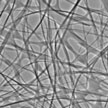 Nanotechnology has the potential to deliver the next generation lithium-ion batteries (LIBs) with improved performance, durability and safety at an acceptable cost. However, several challenging bottlenecks remain to build the ideal nanostructured electrodes for ultrafast rechargeable LIBs. To overcome these challenges, researchers developed a mechanical force-driven method to prepare elongated bending titania-based nanotubes for high-rate LIBs.
Nanotechnology has the potential to deliver the next generation lithium-ion batteries (LIBs) with improved performance, durability and safety at an acceptable cost. However, several challenging bottlenecks remain to build the ideal nanostructured electrodes for ultrafast rechargeable LIBs. To overcome these challenges, researchers developed a mechanical force-driven method to prepare elongated bending titania-based nanotubes for high-rate LIBs.
Sep 4th, 2014
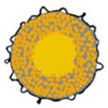 A three-dimensional crumpled graphene-encapsulated nickel sulfide electrode is reported as a superior high-energy lithium storage material. Compared with an electrode without crumpled graphene encapsulation, the optimized electrode yields significant improvements, especially in the cycling stability and rate capability. This enhanced performance is attributed to the 3D framework providing high continuous electron pathway and more free space for charge and mass transfer, and the stabilizing effect of the crumpled graphene based stretchy shell.
A three-dimensional crumpled graphene-encapsulated nickel sulfide electrode is reported as a superior high-energy lithium storage material. Compared with an electrode without crumpled graphene encapsulation, the optimized electrode yields significant improvements, especially in the cycling stability and rate capability. This enhanced performance is attributed to the 3D framework providing high continuous electron pathway and more free space for charge and mass transfer, and the stabilizing effect of the crumpled graphene based stretchy shell.
Aug 6th, 2014
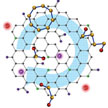 Sulfur is a very intriguing solution for the design of high energy density storage devices. The lithium-sulfur battery theoretically delivers an energy density which is 3-5 times higher than traditional lithium-ion batteries. Unfortunately, several obstacles so far have prevented the practical demonstration of sulfur-based cathodes for Li-S batteries. Among them, the most important one is the rapid capacity fading. Researchers have now developed a novel strategy towards highly stable Li-S batteries by building a strongly coupled interface between surface- mediated carbon hosts and various sulfur-containing guests.
Sulfur is a very intriguing solution for the design of high energy density storage devices. The lithium-sulfur battery theoretically delivers an energy density which is 3-5 times higher than traditional lithium-ion batteries. Unfortunately, several obstacles so far have prevented the practical demonstration of sulfur-based cathodes for Li-S batteries. Among them, the most important one is the rapid capacity fading. Researchers have now developed a novel strategy towards highly stable Li-S batteries by building a strongly coupled interface between surface- mediated carbon hosts and various sulfur-containing guests.
Aug 5th, 2014
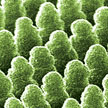 Nanotechnology has the potential to deliver the next generation lithium-ion batteries (LIBs) with improved performance, durability and safety at an acceptable cost. At present, there is a great deal of interest to upgrade the existing LIBs with improved properties and arrive at a battery technology that would permit smart-storage of electric energy. Futuristic smart electric grids that can provide an uninterruptible power supply to a household for 24 hours can replace the currently used lead acid battery systems by performing better in terms of longer back up time and reduced space requirements. With the advent of next generation LIBs, electric vehicles are expected to cover longer distances with shorter charging times; mobile phones and laptops are expected to be charged within minutes and last longer.
Nanotechnology has the potential to deliver the next generation lithium-ion batteries (LIBs) with improved performance, durability and safety at an acceptable cost. At present, there is a great deal of interest to upgrade the existing LIBs with improved properties and arrive at a battery technology that would permit smart-storage of electric energy. Futuristic smart electric grids that can provide an uninterruptible power supply to a household for 24 hours can replace the currently used lead acid battery systems by performing better in terms of longer back up time and reduced space requirements. With the advent of next generation LIBs, electric vehicles are expected to cover longer distances with shorter charging times; mobile phones and laptops are expected to be charged within minutes and last longer.
Jun 18th, 2014
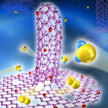 Renewable and high-capacity energy systems like fuel cells and metal-air batteries are key components in any scenario on future energy systems free of fossil fuels. The performance of fuel cells largely depends on the oxygen reduction reaction - the process that breaks the bonds of the oxygen molecules - which is substantially affected by the activity of the cathode catalyst. Researchers have now demonstrated the synthesis of a novel N-doped graphene/single-walled carbon nanotube hybrid material by a facile and cost-favorable one-step CVD method.
Renewable and high-capacity energy systems like fuel cells and metal-air batteries are key components in any scenario on future energy systems free of fossil fuels. The performance of fuel cells largely depends on the oxygen reduction reaction - the process that breaks the bonds of the oxygen molecules - which is substantially affected by the activity of the cathode catalyst. Researchers have now demonstrated the synthesis of a novel N-doped graphene/single-walled carbon nanotube hybrid material by a facile and cost-favorable one-step CVD method.
Jun 9th, 2014
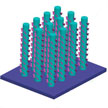 Almost all strategies for solar energy harvest and solar energy storage that exist today are developed as independent technologies. For instance, a solar cell generates electricity from the absorption and conversion of sunlight, while the storage of the produced electricity has to be implemented with another set of energy utilization solutions such as batteries/supercapacitors and fuel cells. With quite an ingenious solution, researchers have now demonstrated a hybrid, multifunctional material system that allows for simultaneous solar power generation (respectively hydrogen production), electrical energy storage, and chemical sensing.
Almost all strategies for solar energy harvest and solar energy storage that exist today are developed as independent technologies. For instance, a solar cell generates electricity from the absorption and conversion of sunlight, while the storage of the produced electricity has to be implemented with another set of energy utilization solutions such as batteries/supercapacitors and fuel cells. With quite an ingenious solution, researchers have now demonstrated a hybrid, multifunctional material system that allows for simultaneous solar power generation (respectively hydrogen production), electrical energy storage, and chemical sensing.
Jun 6th, 2014
 Researchers have demonstrated a unique coaxial carbon nanocable material with pristine carbon nanotubes as the core and nitrogen-doped wrinkled carbon layer as the shell. The active sites rendered by the surface enriched dopant atoms on the carbon nanocables are accessible and effective to catalyze the oxygen involved electrochemical reactions. These coaxial nanocables afford higher ORR/OER current compared with the routine bulk doped nitrogen-doped carbon nanotubes.
Researchers have demonstrated a unique coaxial carbon nanocable material with pristine carbon nanotubes as the core and nitrogen-doped wrinkled carbon layer as the shell. The active sites rendered by the surface enriched dopant atoms on the carbon nanocables are accessible and effective to catalyze the oxygen involved electrochemical reactions. These coaxial nanocables afford higher ORR/OER current compared with the routine bulk doped nitrogen-doped carbon nanotubes.
 Subscribe to our Nanotechnology Spotlight feed
Subscribe to our Nanotechnology Spotlight feed





